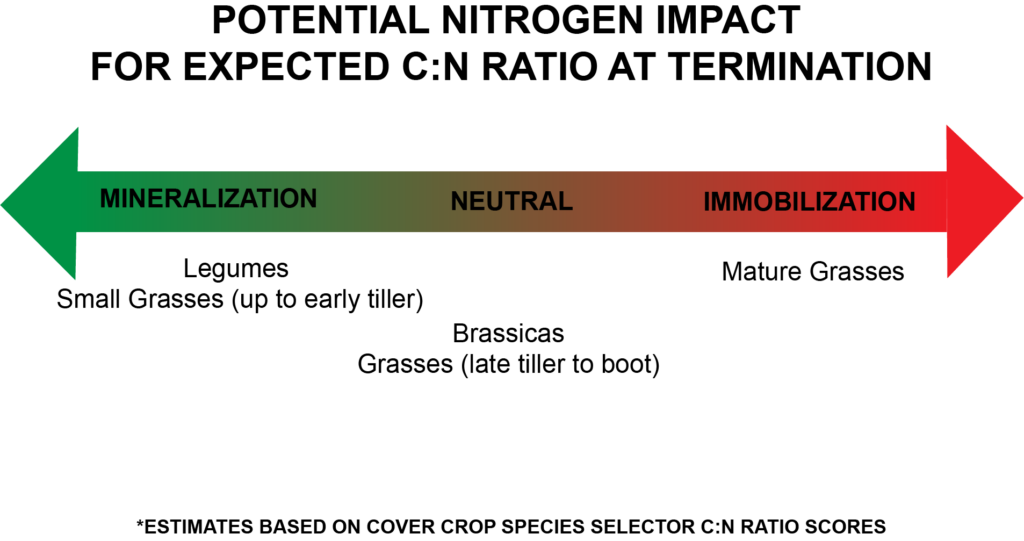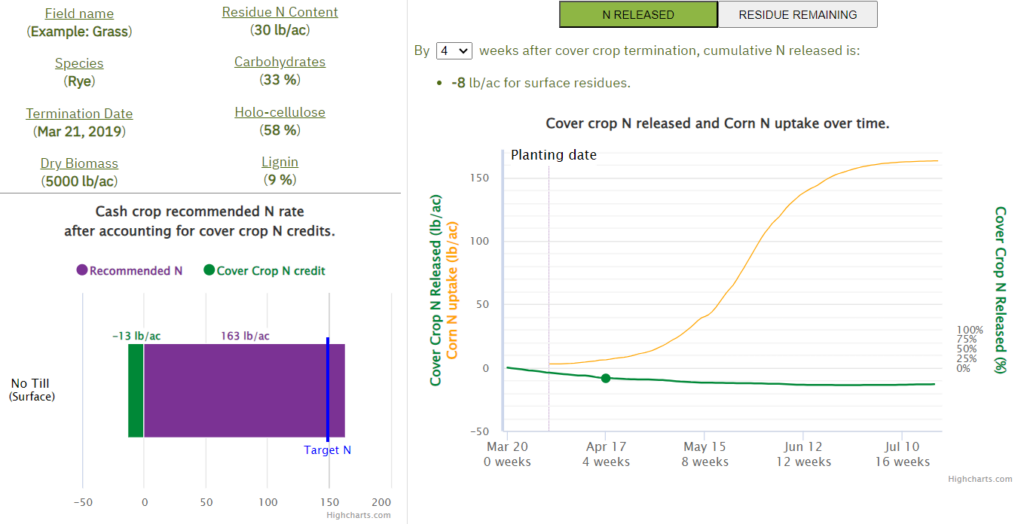Nitrogen Immobilization
go.ncsu.edu/readext?1014984
en Español / em Português
El inglés es el idioma de control de esta página. En la medida en que haya algún conflicto entre la traducción al inglés y la traducción, el inglés prevalece.
Al hacer clic en el enlace de traducción se activa un servicio de traducción gratuito para convertir la página al español. Al igual que con cualquier traducción por Internet, la conversión no es sensible al contexto y puede que no traduzca el texto en su significado original. NC State Extension no garantiza la exactitud del texto traducido. Por favor, tenga en cuenta que algunas aplicaciones y/o servicios pueden no funcionar como se espera cuando se traducen.
Português
Inglês é o idioma de controle desta página. Na medida que haja algum conflito entre o texto original em Inglês e a tradução, o Inglês prevalece.
Ao clicar no link de tradução, um serviço gratuito de tradução será ativado para converter a página para o Português. Como em qualquer tradução pela internet, a conversão não é sensivel ao contexto e pode não ocorrer a tradução para o significado orginal. O serviço de Extensão da Carolina do Norte (NC State Extension) não garante a exatidão do texto traduzido. Por favor, observe que algumas funções ou serviços podem não funcionar como esperado após a tradução.
English
English is the controlling language of this page. To the extent there is any conflict between the English text and the translation, English controls.
Clicking on the translation link activates a free translation service to convert the page to Spanish. As with any Internet translation, the conversion is not context-sensitive and may not translate the text to its original meaning. NC State Extension does not guarantee the accuracy of the translated text. Please note that some applications and/or services may not function as expected when translated.
Collapse ▲Nitrogen immobilization is the temporary loss of available soil nitrogen resulting from the decomposition of cover crop residue. Nitrogen immobilization is also referred to as nitrogen tie-up or nitrogen penalty and can result in additional fertilizer costs for farmers planting a nitrogen-hungry crop like corn.
When discussing the challenge of nitrogen immobilization, it is important to understand an alternative outcome called nitrogen mineralization, which can also result from residue decomposition. With mineralization, plant-available nitrogen is released by microbes as they breakdown the terminated cover crop.
C:N Ratio
The C:N ratio or carbon-to-nitrogen ratio is how many carbon units there are to every nitrogen unit in organic material (plant tissue and residue). For example, a C:N ratio of 40:1 means there are 40 units of carbon to every 1 unit of nitrogen in that plant material. This ratio will influence whether nitrogen is immobilized or mineralized and to what extent.
Mechanisms of Nitrogen Immobilization
Plant residue is broken down and decomposed by soil microbes that feed on this organic material. These microbes’ ideal food has a C:N ratio between 20:1 and 30:1. When their food source (plant residue) has a higher C:N ratio, insufficient nitrogen is available for their biological functions. This means the microbes must utilize nitrogen available in the soil to meet their needs.
The amount of nitrogen microbes must consume from the soil is the nitrogen penalty since it is temporarily unavailable for plants like cash crops. Eventually, this nitrogen will be released by the microbes and made plant available, but it is often too late for that year’s cash crop.
Mechanisms of Nitrogen Mineralization
Nitrogen mineralization is essentially the opposite of immobilization. In this scenario, the plant residue feeding the microbes has a lower C:N ratio and contains more nitrogen than they need. In return, the microbes deposit this excess nitrogen into the soil, which is available for plants. This results in a nitrogen credit for farmers and creates a cost saving by lowering the nitrogen fertilizer required for the following cash crop.
C:N Ratio Variability
It is important for management to account for differences in C:N ratios for cover crops.
Cover Crop Species
Cover crop species have different C:N ratios that will determine if they result in nitrogen immobilization or mineralization.
In general legumes and many brassicas have lower C:N ratios that will result in nitrogen mineralization. Cover crops or cover crop mixes with a C:N ratio between 20:1 and 30:1 will have minimal to no effect on available nitrogen. Finally, grass covers that have higher C:N ratios creating immobilization.
Maturity
The C:N ratio of any cover crop species will generally increase as the season progresses and the plant matures. C:N ratios tend to stay lower through the vegetative stage of development, before they develop more “woody” structures.
Varieties
C:N ratios for different varieties of a cover crop species may vary. Ask your cover crop seed retailer if they have any information to help you make an informed decision.
Management Decisions
How a farm handles nitrogen immobilization will depend on its rotation, goals, and other practices.
A legume cash crop like soybeans can fixate nitrogen, meaning nitrogen immobilization is not a concern and will not negatively affect that crop. Before a field goes into soybeans, a grower may utilize a cover crop like cereal rye to help with weed suppression without fear of additional fertilizer costs.
Nitrogen immobilization is more of a concern before a nitrogen-hungry cash crop like corn. Growers can elect to avoid high C:N ratio cover crops, terminate earlier during the vegetative stage to lessen the amount of nitrogen immobilized or decide to take on the added cost of additional nitrogen inputs. That extra cost may be worth it for growers trying to enhance certain benefits of high C:N cover crops.
Nitrogen Calculator Decision Support Tool
An online tool developed by Precision Sustainable Agriculture can help farmers better understand how much nitrogen is immobilized and when it will be released.
The Nitrogen Calculator will chart nitrogen tie-up and release for 18 weeks past cover crop termination and compare this to the nitrogen demands of the following cash crop.
References
- Cates, A. (2021, May 18). Cover crop residue and C:N ratios. Minnesota Crop News. https://blog-crop-news.extension.umn.edu/2021/05/cover-crop-residue-and-cn-ratios.html
-
Kladivko, E. & Agronomy Department, Purdue University. (2016). Cover crops for soil nitrogen cycling. https://ag.purdue.edu/department/agry/agry-extension/_docs/cover-crops/covercropsnitrogen.pdf
- Vieira Branco Ozorio, D., Basche, A., & Koehler-Cole, K. (2022, September 9). How Much Nitrogen Does My Cover Crop Take Up and When Do I Get It Back? CropWatch. https://cropwatch.unl.edu/2020/how-much-nitrogen-does-my-cover-crop-take-and-when-do-i-get-it-back




